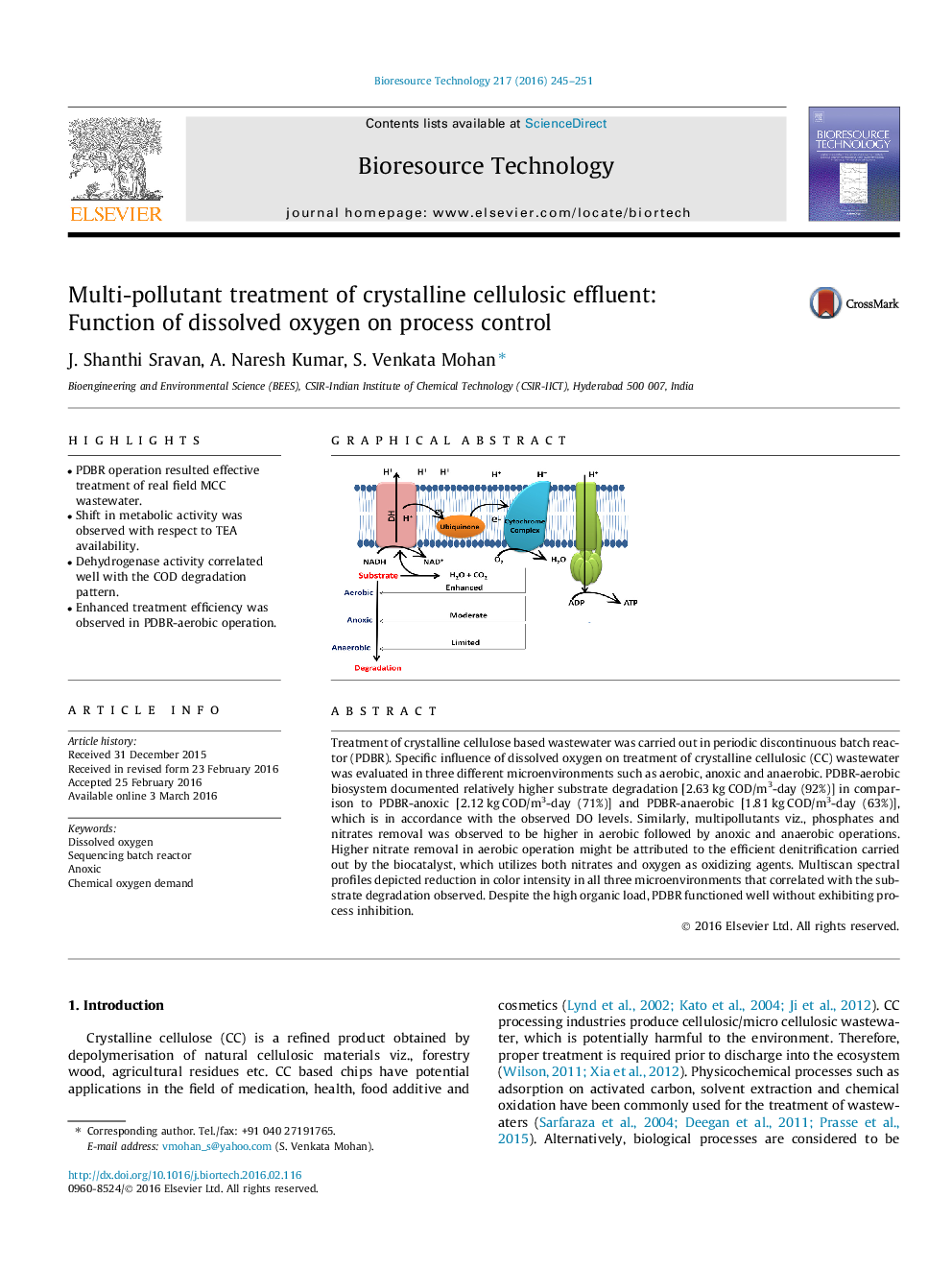| Article ID | Journal | Published Year | Pages | File Type |
|---|---|---|---|---|
| 679165 | Bioresource Technology | 2016 | 7 Pages |
•PDBR operation resulted effective treatment of real field MCC wastewater.•Shift in metabolic activity was observed with respect to TEA availability.•Dehydrogenase activity correlated well with the COD degradation pattern.•Enhanced treatment efficiency was observed in PDBR-aerobic operation.
Treatment of crystalline cellulose based wastewater was carried out in periodic discontinuous batch reactor (PDBR). Specific influence of dissolved oxygen on treatment of crystalline cellulosic (CC) wastewater was evaluated in three different microenvironments such as aerobic, anoxic and anaerobic. PDBR-aerobic biosystem documented relatively higher substrate degradation [2.63 kg COD/m3-day (92%)] in comparison to PDBR-anoxic [2.12 kg COD/m3-day (71%)] and PDBR-anaerobic [1.81 kg COD/m3-day (63%)], which is in accordance with the observed DO levels. Similarly, multipollutants viz., phosphates and nitrates removal was observed to be higher in aerobic followed by anoxic and anaerobic operations. Higher nitrate removal in aerobic operation might be attributed to the efficient denitrification carried out by the biocatalyst, which utilizes both nitrates and oxygen as oxidizing agents. Multiscan spectral profiles depicted reduction in color intensity in all three microenvironments that correlated with the substrate degradation observed. Despite the high organic load, PDBR functioned well without exhibiting process inhibition.
Graphical abstractFigure optionsDownload full-size imageDownload as PowerPoint slide
